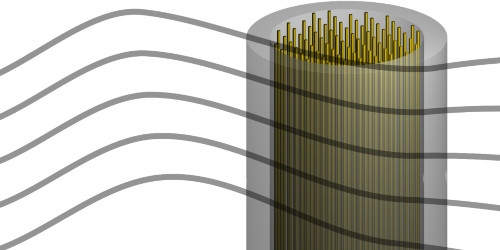A New Plasma-Based Axion Detector
Searches for axion particles, one candidate for dark matter, commonly use an instrument called a haloscope, which converts axions into photons via several different mechanisms. However, current instruments can sense axions only if their mass, which is unknown, is no more than several tens of eV. Alexander Millar, of Stockholm University, and colleagues have proposed a new haloscope design, based on axion interactions with plasma, that should be able to extend the upper detectable axion mass by an order of magnitude.
Existing theory predicts that an axion placed in a magnetic field will mix with a plasma to create an oscillating current. For certain plasmas, the interaction also produces a potentially detectable plasmon, a type of quasiparticle made of oscillating electrons. Using analytical and numerical models, the team showed that to produce this plasmon, the plasma’s characteristic frequency—the rate at which charges naturally oscillate when displaced by small distances—must match the axion’s frequency, which depends on the particle’s mass.
To produce such a plasma, the team proposes a cylindrical instrument, 60 cm across, containing an array of parallel thin wires in an external magnetic field. In this arrangement, the wires behave like a plasma whose characteristic frequency can be tuned by changing the spacing between the wires. This type of device should be sensitive to axions with masses of between 35 and 400 eV. While the overall size of existing haloscopes determines the axion mass range they can detect, the detection range of this new instrument depends only on the interwire spacing. This dependency would allow researchers to make an instrument with a larger volume, thus increasing the likelihood of detecting an axion.
This research was published in Physical Review Letters.
–Sophia Chen
Sophia Chen is a freelance science writer based in Tucson, Arizona.





